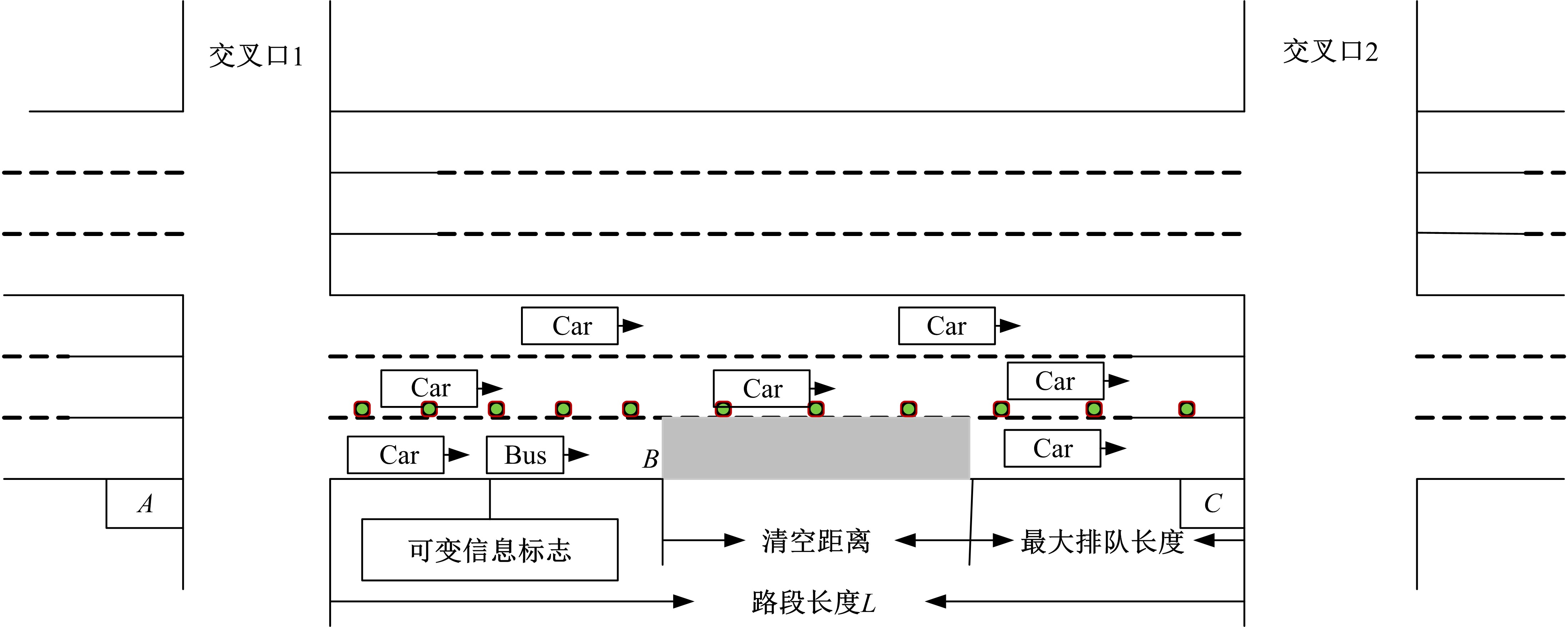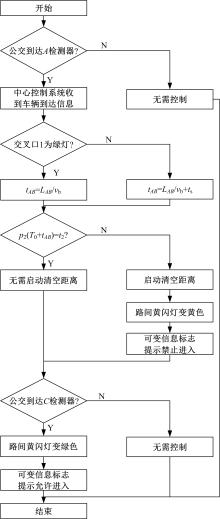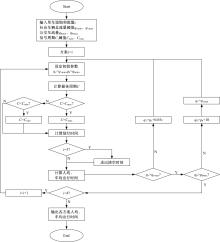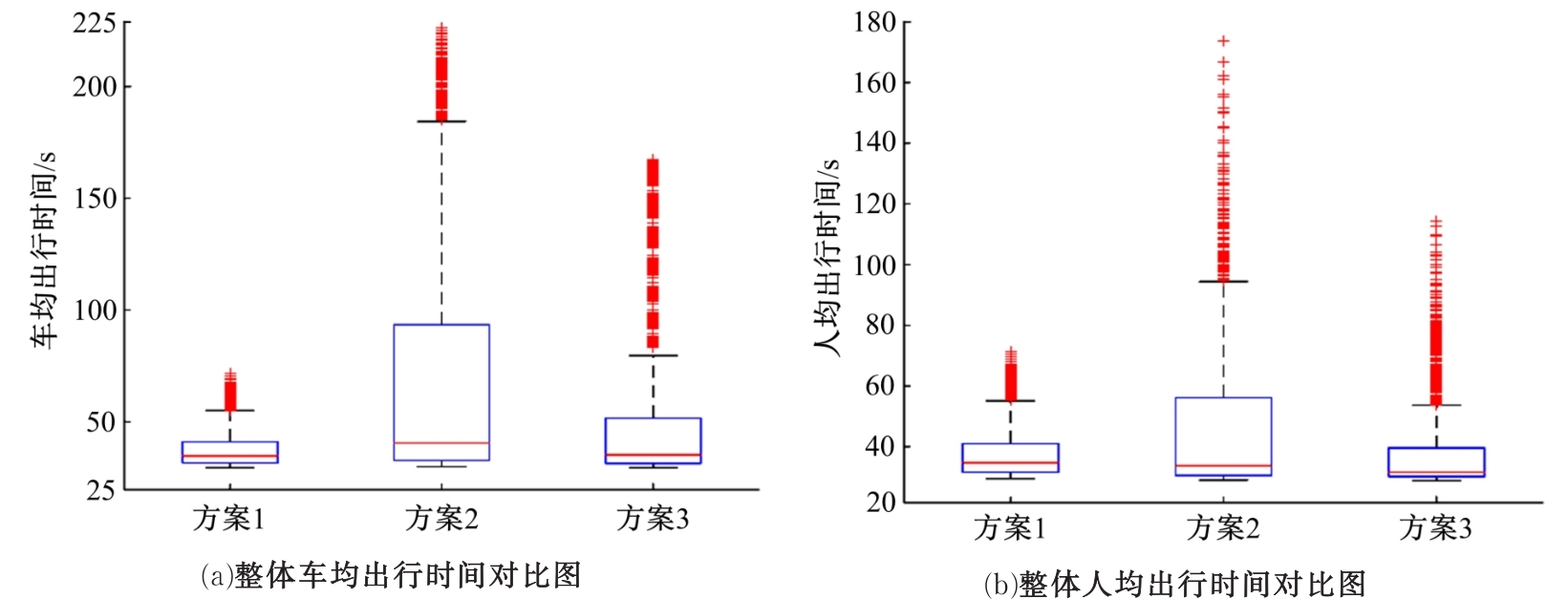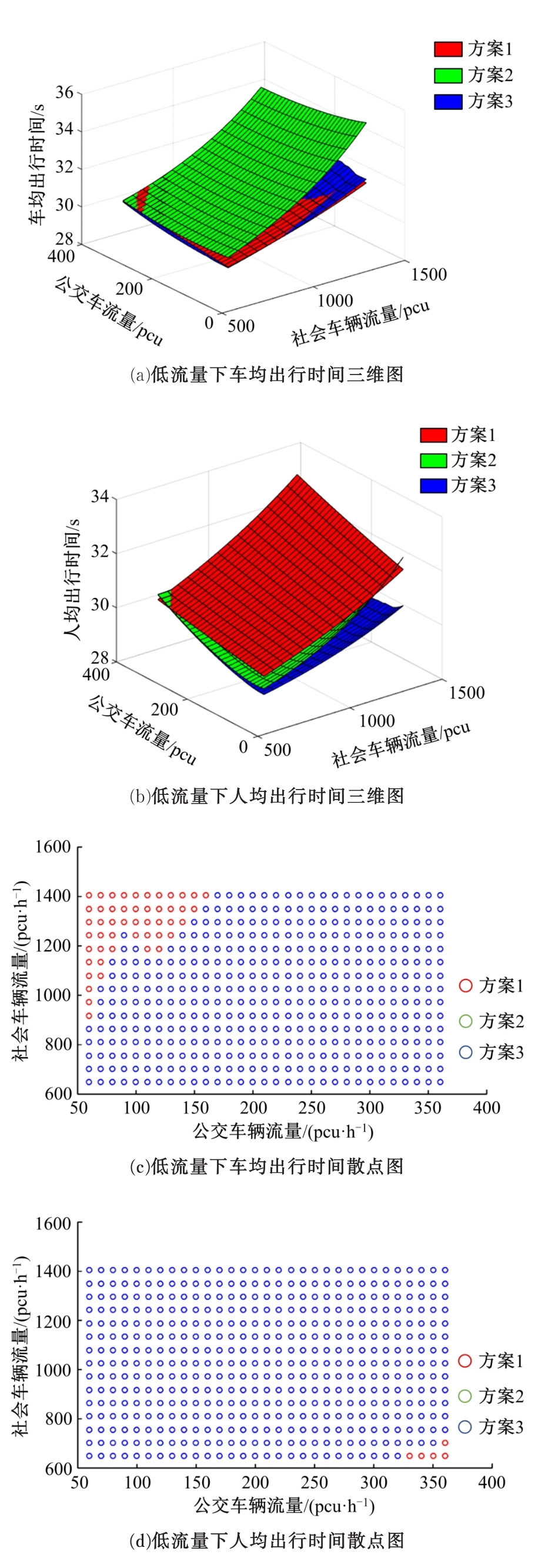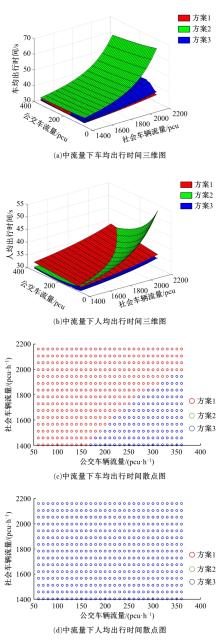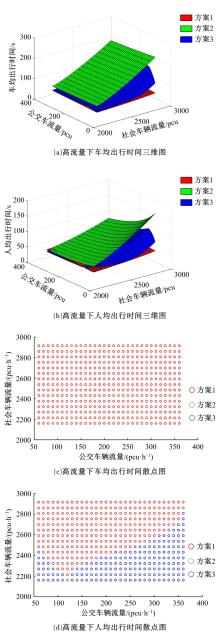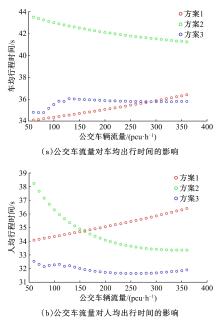Journal of Jilin University(Engineering and Technology Edition) ›› 2020, Vol. 50 ›› Issue (5): 1677-1686.doi: 10.13229/j.cnki.jdxbgxb20190410
Setting of dynamic bus lane and its simulation analysis and evaluation
Xian-min SONG1( ),Ming-ye ZHANG1,Zhen-jian LI2(
),Ming-ye ZHANG1,Zhen-jian LI2( ),Xin WANG1,Ya-nan ZHANG1
),Xin WANG1,Ya-nan ZHANG1
- 1.College of Transportation,Jilin University,Changchun 130022,China
2.Big Data and Network Management Center,Jilin University,Changchun 130022,China
CLC Number:
- U491
| 1 | 王涛, 陈峻. 基于时间效益的城市公交专用道设置流量条件[J]. 哈尔滨工业大学学报, 2014, 46(4): 115-121. |
| Wang Tao, Chen Jun. Traffic volume conditions of setting bus lane on urban roadway based on time utility[J]. Journal of Harbin Institute of Technology, 2014, 46(4): 115-121. | |
| 2 | 黄艳君, 陈学武, 张卫华. 公交专用道设置前后路段交通流模型的比较[J]. 华中科技大学学报: 自然科学版, 2003, 20(4): 68-70. |
| Huang Yan-jun, Chen Xue-wu, Zhang Wei-hua. Comparison of traffic flow on the road with or without bus lane[J]. Journal of Huazhong University of Science and Technology(Urban Science Edition), 2003, 20(4): 68-70. | |
| 3 | Basso L J, Guevana C A, Gschwender A, et al. Congestion pricing, transit subsidies and dedicated bus lanes: efficient and practical solutions to congestion[J]. Transport Policy, 2011, 18(5): 676-684. |
| 4 | Li S G, Ju Y F. Evaluation of bus-exclusive lanes[J]. IEEE Transactions on Intelligent Transportation Systems, 2009, 10(2): 236-245. |
| 5 | 吴娇蓉, 王宇沁, 魏明, 等. 路侧公交专用道设置长度对公交线路运行可靠性的影响[J]. 吉林大学学报: 工学版,2017, 47(1): 82-91. |
| Wu Jiao-rong, Wang Yu-qin, Wei Ming, et al. Impact of length of road-side bus lane on bus operational reliability[J]. Journal of Jilin University(Engineering and Technology Edition), 2017, 47(1): 82-91. | |
| 6 | 梁士栋, 赵淑芝, 马明辉, 等. 路段直线式公交站点对公交车延误的影响[J]. 吉林大学学报: 工学版,2016, 46(6): 1807-1817. |
| Liang Shi-dong, Zhao Shu-zhi, Ma Ming-hui,et al. Impacts of linear bus stop on bus delays[J]. Journal of Jilin University(Engineering and Technology Edition), 2016, 46(6): 1807-1817. | |
| 7 | Viegas J, Lu B. Widening the scope for bus priority with intermittent bus lanes[J]. Transportation Planning & Technology, 2001, 24(2): 87-110. |
| 8 | Viegas J, Lu B. The intermittent bus lane signals setting within an area[J]. Transportation Research Part C Emerging Technologies, 2004, 12(6): 453-469. |
| 9 | Viegas J, Lu B, Vieiar J, et al. Demonstration of the intermittent bus lane in Lisbon[J]. IFAC Proceedings Volumes, 2006, 39(12): 239-244. |
| 10 | Yang H, Wang W. An innovative dynamic bus lane system and its simulation-based performance investigation[J]. IEEE Intelligent Vehicles Symposium, 2009(7): 105-110. |
| 11 | 谢秋峰. 设置间歇式公交专用道的路段通行能力研究[D]. 南京: 东南大学交通学院, 2012. |
| Xie Qiu-feng. Research on the capacity of road section with intermittent bus lane[D]. Nanjing: School of Transportation, Southeast University, 2012. | |
| 12 | Wu W, Head L, Yan S, et al. Development and evaluation of bus lanes with intermittent and dynamic priority in connected vehicle environment[J]. Journal of Intelligent Transportation Systems, 2018, 22(4): 301-310. |
| 13 | Wu D, Deng W, Song Y, et al. Evaluating operational effects of bus lane with intermittent priority under connected vehicle environments[J/OL].[2017-04-19]. |
| [1] | Da-wei ZHANG,Hai-tao ZHU. An optimization⁃based evacuation model considering pedestrian heterogeneity [J]. Journal of Jilin University(Engineering and Technology Edition), 2020, 50(2): 549-556. |
| [2] | Hong-fei JIA,Xin-ru DING,Li-li YANG. Bi-level programming model for optimization design of tidal lane [J]. Journal of Jilin University(Engineering and Technology Edition), 2020, 50(2): 535-542. |
| [3] | Chao-ying YIN,Chun-fu SHAO,Xiao-quan WANG,Zhi-hua XIONG. Influence of built environment on commuting mode choice considering spatial heterogeneity [J]. Journal of Jilin University(Engineering and Technology Edition), 2020, 50(2): 543-548. |
| [4] | Yi-ming BIE,Kai JIANG,Ru-ru TANG,Lin-hong WANG,Xin-yu XIONG. Time of interval partition for traffic control at isolated intersection considering impacts of plan transition [J]. Journal of Jilin University(Engineering and Technology Edition), 2019, 49(6): 1844-1851. |
| [5] | Yuan-li GU, Yuan ZHANG, Xiao-ping RUI, Wen-qi LU, Meng LI, Shuo WANG. Short⁃term traffic flow prediction based on LSSVMoptimized by immune algorithm [J]. Journal of Jilin University(Engineering and Technology Edition), 2019, 49(6): 1852-1857. |
| [6] | Guo-zhu CHENG, Si-he FENG, Tian-jun FENG. Setting condition of on⁃street parking space occupied vehicle lane [J]. Journal of Jilin University(Engineering and Technology Edition), 2019, 49(6): 1858-1864. |
| [7] | Hai-bo LONG,Jia-qi YANG,Xue-yu ZHAO. Optimizing vehicles allocation of multimodal coordinated freight transport based on transshipment delay risks [J]. Journal of Jilin University(Engineering and Technology Edition), 2019, 49(5): 1492-1499. |
| [8] | Quan LIANG,Jian-cheng WENG,Wei ZHOU,Jian RONG. Stability identification of public transport commute passengers based on association rules [J]. Journal of Jilin University(Engineering and Technology Edition), 2019, 49(5): 1484-1491. |
| [9] | Wen⁃jing WU,Run⁃chao CHEN,Hong⁃fei JIA,Qing⁃yu LUO,Di SUN. Collaborative control method of vehicles in U⁃turn zone under environment of cooperative vehicle infrastructure system [J]. Journal of Jilin University(Engineering and Technology Edition), 2019, 49(4): 1100-1106. |
| [10] | Zhao⁃wei QU,Zhao⁃tian PAN,Yong⁃heng CHEN,Peng⁃fei TAO,Di SUN. Car⁃following model with improving safety distance based on optimal velocity model [J]. Journal of Jilin University(Engineering and Technology Edition), 2019, 49(4): 1092-1099. |
| [11] | Lei CHEN,Jiang⁃feng WANG,Yuan⁃li GU,Xue⁃dong YAN. Multi⁃source traffic data fusion algorithm based onmind evolutionary algorithm optimization [J]. Journal of Jilin University(Engineering and Technology Edition), 2019, 49(3): 705-713. |
| [12] | Qiang TU,Lin CHENG,Fen LIN,Chao SUN. Finding shortest path considering traveler′s risk attitude [J]. Journal of Jilin University(Engineering and Technology Edition), 2019, 49(3): 720-726. |
| [13] | Ning⁃bo CAO,Li⁃ying ZHAO,Zhao⁃wei QU,Yong⁃heng CHEN,Qiao⁃wen BAI,Xiao⁃lei DENG. Social force model considering bi⁃direction pedestrian slipstreaming behavior [J]. Journal of Jilin University(Engineering and Technology Edition), 2019, 49(3): 688-694. |
| [14] | Chao⁃ying YIN,Chun⁃fu SHAO,Xiao⁃quan WANG. Influence of urban built environment on car commuting considering parking availability [J]. Journal of Jilin University(Engineering and Technology Edition), 2019, 49(3): 714-719. |
| [15] | Qiao⁃wen BAI,Zhao⁃wei QU,Yong⁃heng CHEN,Shuai XIONG,Chu⁃qing TAO. Modeling on trajectories of through vehicles with an unprotected left⁃turn phase under non⁃strict priority [J]. Journal of Jilin University(Engineering and Technology Edition), 2019, 49(3): 673-679. |
|
||

